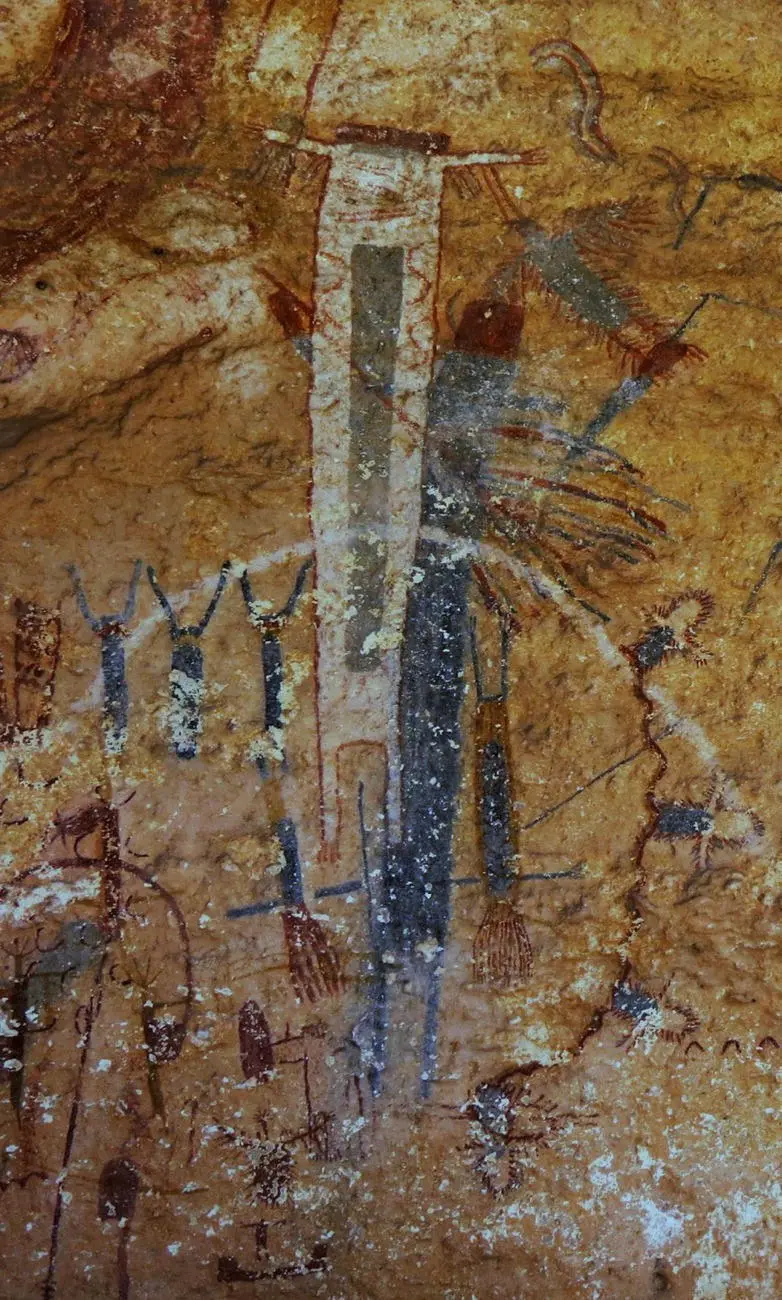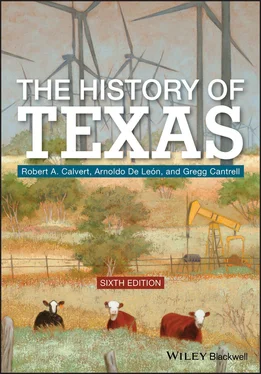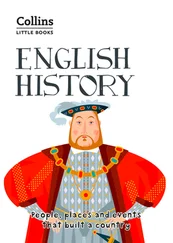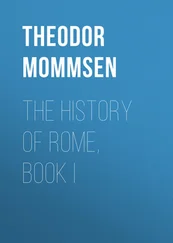
Figure 1.1 White Shaman. Cave art of the prehistoric inhabitants of the Pecos River area.
Credit: Amistad National Recreation Area.
Anthropological evidence reveals that before the Europeans arrived, a number of distinct culture groups lived in the varied geographical areas of what is now Texas. Such pre‐horse people shared numerous characteristics, certainly the result of evolutionary processes, adaptation to historical situations, and common responses to environmental factors. Generally, Native Americans bonded around self‐reliant bands or extended families. Leaders rose through the ranks, gaining their positions by a proven display of bravery, wisdom, or special attributes. Their religion embraced the supernatural; today, it would be said that they were animistic. They thought, for instance, that natural objects–whether the galaxy, Earth’s geographical landscape, the flora or fauna–had an existence that paralleled that of humans and could be summoned for help in times of need. These culture groups recognized social/gender distinctions. Women cared for the household: cooking, preserving foods for later use, and fashioning animal skins into clothing. Women maintained a close contact with the land, cultivating it, foraging for edible products, and gathering clay from which they made cooking utensils or wares to be traded with other Indian nations.
Certain shared traits notwithstanding, Native American civilizations in pre‐Columbian Texas were quite diverse. Several of the peoples had different places of origin, some tracing their lineage to culture groups in the modern‐day US South, northern Mexico, or the Rocky Mountain region. No common language united Native American groups in Texas. Although some made war with or raided neighboring groups regularly, most preferred to avoid conflict and lived in terror of attacks by aggressors. Numerous peoples preferred a sedentary life, whereas others maintained a nomadic existence. Adaptation to local environment tended to separate one culture group from another. Thus, one Texas tribe might build villages (and reside in permanent dwellings constructed of cane and grass– Figure 1.2) and rely on farming, whereas another might stay on the move, living in portable shelters such as hide teepees as they migrated seasonally to gather wild vegetation or pursue game, trapping their prey and killing it with clubs and other crude weapons. Region also determined a group’s economy, as livelihoods might turn on agriculture, hunting big game such as the American bison (commonly known as buffalo), or perhaps a mixture of both combined with intertribal trade.
Along the coast of southern Texas and in parts of the Trans‐Nueces lived the Karankawa and Coahuiltecan peoples. Both groups had common roots in modern‐day northern Mexico: the Coahuiltecans were tied linguistically and otherwise to the Native inhabitants of Coahuila. The Karankawas and the Coahuiltecans lacked formal political organization; social life revolved around the family, extending into small autonomous bands (related by kin) presided over by a chieftain. Their religious life was primitive, and they believed that supernatural entities governed the cosmos.
Their respective environments of marshy terrain close to the Gulf Coast and the chaparral of the brush country were harsh ones. The territory of the Karankawa extended along a thin area running down the coast from Matagorda Bay (some archaeologists believe even as far north as the Lower Brazos River region) to Corpus Christi Bay, and the Coahuiltecans lived in the Gulf Coast Plain and much of what is today considered South Texas. Both tribes moved frequently, their migrations generally corresponding to the change of seasons. Over the years, the nomadic Karankawas and Coahuiltecans had learned the ecology of their respective regions well; they knew when nature produced its greatest yields and the precise grounds where such bounties lay. Indeed, they tended to live in the same general site during one part of the year before moving on to another favorite camp. To guarantee a reliable and abundant food supply, during the fall and winter months the Karankawas stayed close to the coast, where they relied heavily on shellfish, aquatic plants, and waterfowl, but also hunted deer and even alligators. For life along the bays and lagoons, the Karankawas built small canoes from tree trunks and made nets, an assortment of traps, lances, and bows and arrows. The Coahuiltecans also preferred to inhabit specific locations during the winter, places where they could expect to find abundant roots and other easily attainable foodstuffs. During the spring and summer, the Karankawas moved inland to the coastal prairies and woodlands. There, they relied less on marine life (though numerous rivers and creeks still provided them with fish) and more on land animals–among them deer, rabbits, prairie fowl, and occasionally buffalo–and the annual offerings of nuts, beans, and fruits produced by indigenous trees and shrubs. During the warmer seasons, the Coahuiltecans foraged for nature’s yields over the large expanse of South Texas. They took advantage of the spring rains, catching fish trapped in receding pools of water, and hunting deer, lizards, birds, fish, and insects and gathering mesquite beans, prickly pears, pecans, and roots. Dome‐shaped wigwams covered by animal skins or improvised windbreaks served as the most common type of Karankawa and Coahuiltecan housing. When it came time to move, they simply dismantled their shelters, taking them and other useful items with them.

Figure 1.2 Over 1,200 years ago, a group of Caddo Indians known as the Hasinai, who were part of the great Mound Builder culture of the southeast, built a village and ceremonial center twenty‐six miles west of present‐day Nacogdoches. Shown here is a reproduction of a typical Caddo house like those found here at this Mount site.
Source: Courtesy of the Caddoan Mounds State Historic Park, Texas Parks and Wildlife.
The Northeast Texas Indians
East of the Trinity River, tribes related to the Indians of the Mississippi Valley prospered, among them the Caddos. Many centuries before Europeans had realized the existence of the New World, people roamed the lower Mississippi River expanse in quest of edible plants and small game. Sometime around AD 800, however, these hunting‐and‐gathering peoples turned to farming, cultivating a variety of vegetables, among them beans, squash, and their major staple–maize, or corn. Around AD 1200, the Mississippian civilization reached its high point of cultural growth and tribal strength before entering a gradual decline. The Caddo Indians of Texas constituted the westernmost flank of Mississippian culture, owing much to it in the way of farming, village life, and religion, though the Caddos had also borrowed cultural traits from tribes to the west (in New Mexico) and the south (Mexico). Although Mississippian culture in general was in a state of decline when Columbus sailed from Spain, Caddoan civilization was persevering.
Caddo settlements extended from the Trinity River, due north past the Red River, and as far east as the Mississippi River. Stable communities–consisting of isolated rural villages–were generally located on the best farming lands in the region. Close to sources of fresh water (primarily rivers and streams), the Caddos constructed dome‐shaped homes from grass and cane. As many as four families shared one such domicile, for Caddo home life apparently revolved around multifamily dwellings. With fields surrounding their settlements, the Caddos had easy access to their principal source of sustenance. Like peoples in the other parts of the world at the time, the Caddos planted twice a year–in the spring and early summer. Notably, Caddo society entrusted the role of agricultural production to women, who through experience and with good judgment tended the plants (generally corn, squash, and beans), rotated the crops as needed, fertilized the soil (with the droppings of wild animals native to eastern Texas), then carefully stored the excess harvest for use during lean times.
Читать дальше












